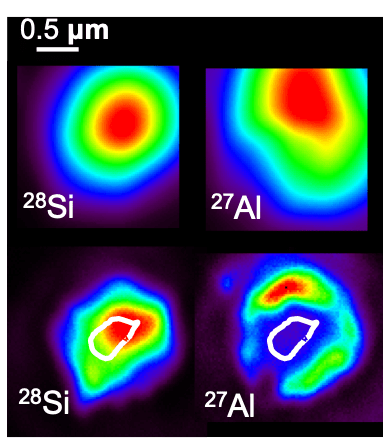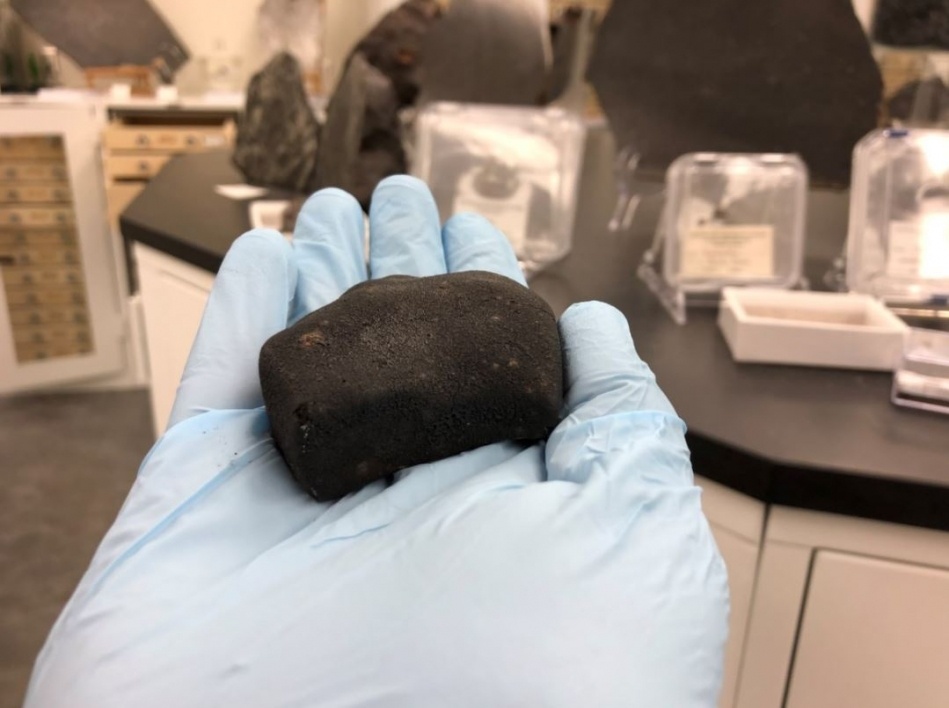When Carl Sagan said, “We are all made of star stuff,” he didn’t just mean we were made up of parts of our own star. Other stars contributed to the material that built our solar system, and some of that “presolar” material is still present in a pristine form inside meteorites. Now, a team led by Dr. Nan Liu at Washington University in St. Louis took a close look at some of the parts of meteorites that formed before the Sun. They held some exciting surprises and answers.
Scientists have known for a long time that meteorites contain presolar material. One of their most significant issues was separating that presolar material from the rest of the material that has merged as part of the meteorite’s formation. As with so many problems in science, this one was solved by throwing a powerful enough instrument at it.
 Image of one of the presolar grains embedded in a meteorite captured by NanoSIMS.
Image of one of the presolar grains embedded in a meteorite captured by NanoSIMS.
Credit – Nan Liu Lab
NanoSIMS is a powerful mass spectrometer. Dr. Liu and her team used an upgraded version with a more powerful plasma ion source to drive NanoSIMS, resulting in clear pictures of presolar grains they were interested in. They used the ion beam itself to clear away other contaminants, such as aluminum, which were not formed as part of the presolar brain.
With a clear picture of the true materials in the grain, the team could start collecting valuable data. One thing they looked for was the isotope ratios of carbon and nitrogen. C and N are two isotopes that can be directly studied in stars themselves. Confirming their radios in a presolar meteorite will help inform stellar physicist’s models of the growth of carbon stars, a type of giant star that contains more carbon than oxygen.
UT video discussing some details of meteorites.There had been a sticking point in the stellar physics community about nitrogen ratios found in previous meteorites. The new study clarifies that those ratios were likely skewed due to contaminants that Dr. Liu’s group removed with the ion beam.
Carbon and nitrogen weren’t the only isotopes the study was interested in thought. Al-26, a radioactive form of aluminum, also captured their attention. The ratio seen in the presolar grains was about twice the rate predicted by stellar evolution models. Additionally, the overall isotope levels suggest that the temperature that formed the grains in a carbon star was likely higher than previously expected.
 Sample meteorite handled by researchers at Arizona State University.
Sample meteorite handled by researchers at Arizona State University.
Credit – ASU
That’s a lot of discoveries for a small piece of presolar material wrapped up in a meteorite. But any data about previous stars is valuable, especially from samples that scientists can literally get their hands on. There are also plenty more meteorites out there that might hold other hints at the stellar formation process.
Learn More:
WashU – Stellar fossils in meteorites point to distant stars
Astrophysical Journal Letters – New Multielement Isotopic Compositions of Presolar SiC Grains: Implications for Their Stellar Origins
Daily Mail – Ancient meteorites have grains of stars that are OLDER than the solar system itself, study shows
UT – Ancient Meteorites Can be Found Embedded in Rocks, Like Fossils
Lead Image:
Graphic showing the presolar material forming out of a star explosion or a carbon star.
Credit – NASA, Nan Liu, Andrew Davis

